Will 13-speed save 1x on the road?
There may still be a place for 1x in the pro peloton
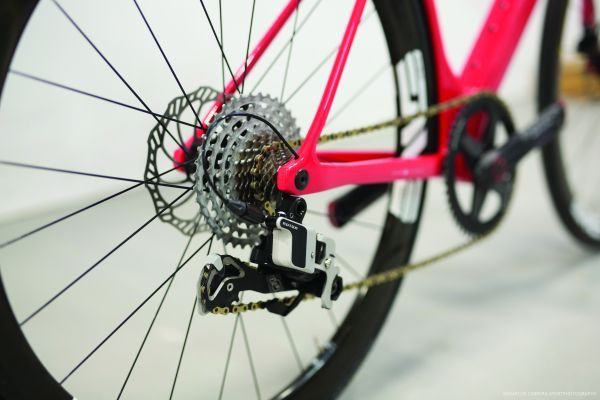

When the Aqua Blue team folded and Adam Blythe angrily blamed the 3T Strada bike, claiming it was “a track bike with gears” saying, “you’re knackered – you can’t ride a one-day race never mind a two-week race,” onlookers assumed that marked the end of the road for 1x road bikes in the professional peloton.
The nail in 1x’s coffin appeared to be the launch of the Strada Due in July, a conventional double-chainring version of the Strada, with the brand’s Gerard Vroomen admitting: “Of course pro riders find themselves in a very specific situation, often going up mountains in a peloton surrounded by 100 riders with no choice but to ride the exact pace of those around them, not their own pace. In such a situation, where they can’t go their own pace, having that extra gear can be an advantage.”
But do you really have to scrap all the advantages of a 1x system, such as weight saving, better aerodynamics, simplicity, easy adjustment and clean lines, to go back to a conventional set-up? What if you just had more sprockets than the 11 that were at Aqua Blue’s disposal with their SRAM Force1 groupsets?
While 3T appeared to be giving up on 1x, or at least hedging its bets, Rotor, one of Dimension Data’s equipment sponsors this year, unveiled a 1x13 groupset at Eurobike. Although it’s still in its launch phase, the Spanish brand is confident that it’s headed for the pro peloton and revealed to Cycling Weekly that it had already been talking to 3T with regard to the 1x Strada bike.
Rotor engineer Carlos Carton, who led the 1x13 project, said: “With Aqua Blue we have seen that 1x11 is not enough. For that range, the steps in between are too big for these guys. But with 1x13 we can extend the range of ratios to match 2x11 and keep the same steps in between.”
Rotor has demonstrated that with a road-racing 2x11 set-up there are actually only 14 different ratios. Its 1x13 can match it pretty much gear for gear. In addition Rotor, which has six years of experience of manufacturing power meters, has data to suggest that slighter bigger steps when riders reach the larger sprockets are inconsequential and so 13 is plenty: “For example in our 1x10-36 we have 10, 11, 12, 13, 14 – the same as what they’re used to using. And then we’re opening a little bit the steps but we have seen with our power meter data that at slow speed the cadence range that you can afford biomechanically is bigger. So these bigger steps at the top of the cassette are biomechanically supported.
“So because of this we think it should not be so hard for it to be accepted by pro cyclists and the pro peloton. But it would hard to change minds when they are looking for victories and they are paid for these wins. So they don’t want to use something new or untested. So you have to break these mental barriers.”
My view
Paul McGuinness, global communication manager, Rotor
The confidence is going to be a big part of it. [Road riders] are going to be saying look, this is what I have on my current bike setup, will 1x13 give me the same or better range or better distribution of gears? We are preparing comparison charts that will show people without getting to scientific or too heavy-going that it will, and we have four different cassettes and range of chainrings so that they can match 50/34 and 11-28 or whatever 2x set-up they’re used to.
Obviously Shimano have a huge amount invested in the front derailleur. They don’t want to take away the front derailleur because they want their customers to buy more of them. And they also want to have different groupsets for different disciplines because that’s their business model. As a smaller manufacturer we can be a bit more agile.
Our view
Clearly the sticking point with 1x is the lack of ratios compared to 2x11, but Rotor’s 1x13 system fills in the gaps. Even if it takes the road pros longer to adopt it, 1x13 will be snapped up by everyone else.

Thank you for reading 20 articles this month* Join now for unlimited access
Enjoy your first month for just £1 / $1 / €1
*Read 5 free articles per month without a subscription

Join now for unlimited access
Try first month for just £1 / $1 / €1
Get The Leadout Newsletter
The latest race content, interviews, features, reviews and expert buying guides, direct to your inbox!
Simon Smythe is a hugely experienced cycling tech writer, who has been writing for Cycling Weekly since 2003. Until recently he was our senior tech writer. In his cycling career Simon has mostly focused on time trialling with a national medal, a few open wins and his club's 30-mile record in his palmares. These days he spends most of his time testing road bikes, or on a tandem doing the school run with his younger son.
-
 Lorena Wiebes surges to 100th career victory at Gent-Wevelgem
Lorena Wiebes surges to 100th career victory at Gent-WevelgemThe Dutch rider continued her near-unbeaten 2025 with SD Worx–Protime
By Alex Lancaster-Lennox Published
-
 'It is crazy': Mads Pedersen takes historic victory at Gent-Wevelgem
'It is crazy': Mads Pedersen takes historic victory at Gent-WevelgemThe Lidl-Trek rider's dominance marked the second successive men's winner in more than 30 years and becomes the seventh member of the Club Trois.
By Alex Lancaster-Lennox Published
-
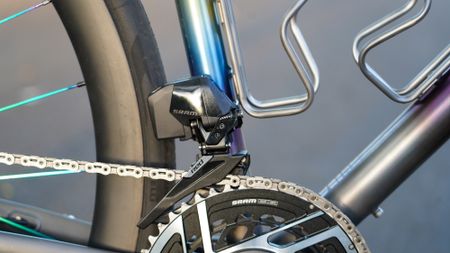 Opinion: Are electronic groupsets worth the investment?
Opinion: Are electronic groupsets worth the investment?Thoughts on drivetrains, buttons, batteries, fast vs slow, good vs evil, wristwatches and zen states of being
By Tyler Boucher Published
-
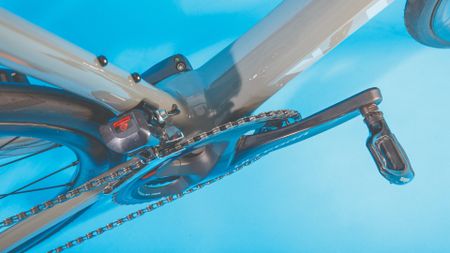 Everything you want to know about the Q Factor
Everything you want to know about the Q FactorWhat it is and why it matters, how to measure it, what the Q stands for, and more
By Tyler Boucher Published
-
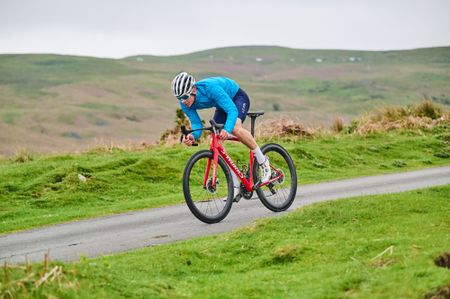 Stiffness vs. Compliance: Making sense of bicycle frame design
Stiffness vs. Compliance: Making sense of bicycle frame designHow frame designers find the sweet spot between stiffness and compliance as well as some thoughts on “ride quality”
By Tyler Boucher Published
-
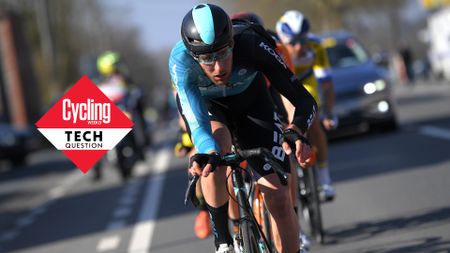 Tech Question: We're used to racers on narrow bars - but are they more comfortable, too?
Tech Question: We're used to racers on narrow bars - but are they more comfortable, too?We ask the experts what to look for in determining the optimal handlebar width
By Joe Baker Published
-
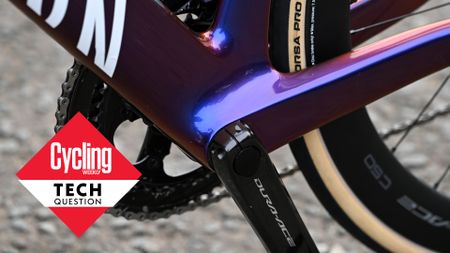 Tech Question: Where do things now stand on press-fit bottom brackets? Good or bad?
Tech Question: Where do things now stand on press-fit bottom brackets? Good or bad?Few innovations have garnered as much animosity as press-fit bottom brackets - but the tech now has some strong proponents
By Stefan Abram Published
-
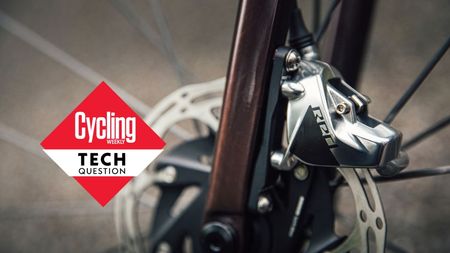 Tech Question: Is a proper clean the only disc brake upgrade you need?
Tech Question: Is a proper clean the only disc brake upgrade you need?Bike mechanic and owner of Surrey Hills Cycleworks, Dave Farmer, shares his tips on how to improve braking performance
By Stefan Abram Published
-
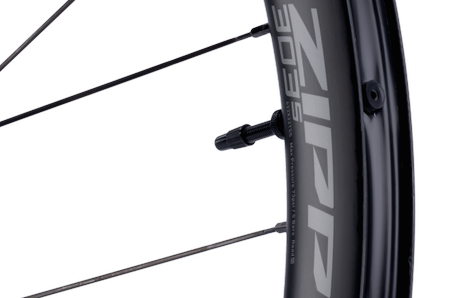 What are hookless rims and do you need them?
What are hookless rims and do you need them?With the big wheel brands launching new rims with straight sidewalls, we ask whether hookless technology can benefit your bike riding
By Simon Smythe Published
-
 Do you need indoor cycling specific clothing?
Do you need indoor cycling specific clothing?With an ever expanding range of indoor cycling kit available, we ask if it really makes any difference?
By Michelle Arthurs-Brennan Published
